Disclaimer: This article may contain affiliate links. Clicking on them may earn Costa Rica Vibes a commission, at no extra cost to you. Thank you for your support!
Driving in Costa Rica: What You Need to Know Before
Are you considering renting a car and driving in Costa Rica?
Driving in Costa Rica is often the best way to get around if you plan to visit multiple places within the country. However, if you are interested in driving in Costa Rica there are some things you should be aware of before you get on the road.
We have been living in Costa Rica since 2016 and have driven in almost every town in this country. Plus, we live in San Jose, which is arguably the craziest place to drive. So, by default, we are experts on what to expect when driving here.
We created this guide to tell you how you can drive legally, make you aware of what road signs mean, tell you what to watch out for when driving, and give you tips on what to do if you get pulled over or get in an accident.
So, let’s get to figuring out everything you need to know about driving in Costa Rica!
Driving in Costa Rica Legally
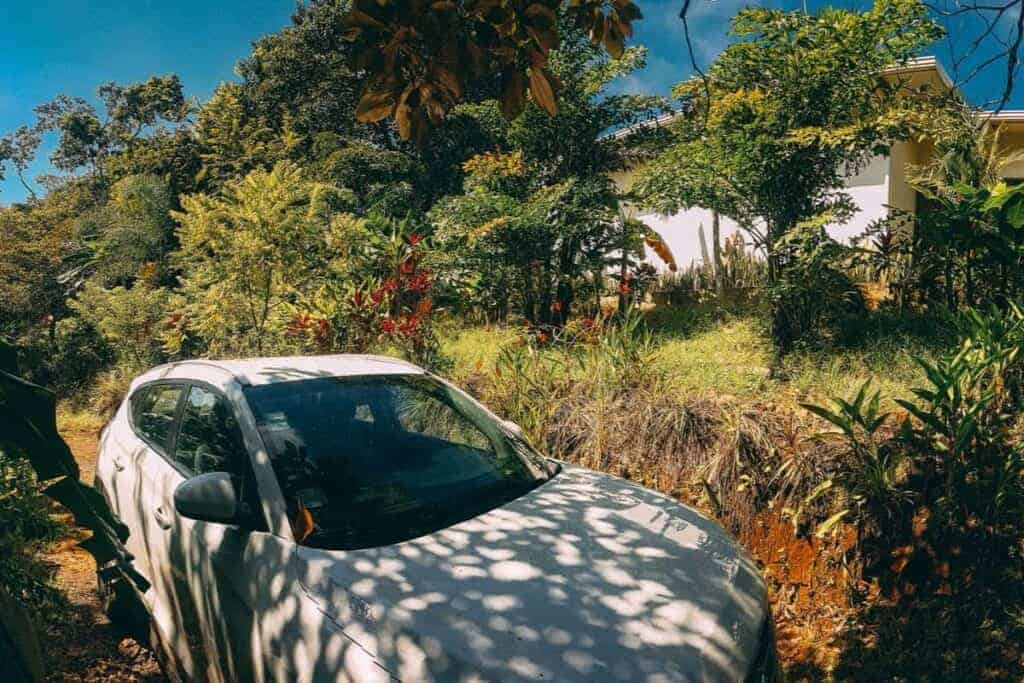
If you have a valid driver’s license in your home country you will be allowed to drive in Costa Rica for up to 90 days.
You do not need an international driver’s license.
If you plan on staying in Costa Rica for longer than 90 days you will have to get a Costa Rican driver’s license.
Keep in mind that most rental car companies will not rent a car to you if you are under 23 years old or older than 75 years old.
We suggest making a photocopy of your driver’s license and keeping it in a safe spot. If your license gets lost or stolen while traveling it is good to have a backup.
Should I Rent a Car?
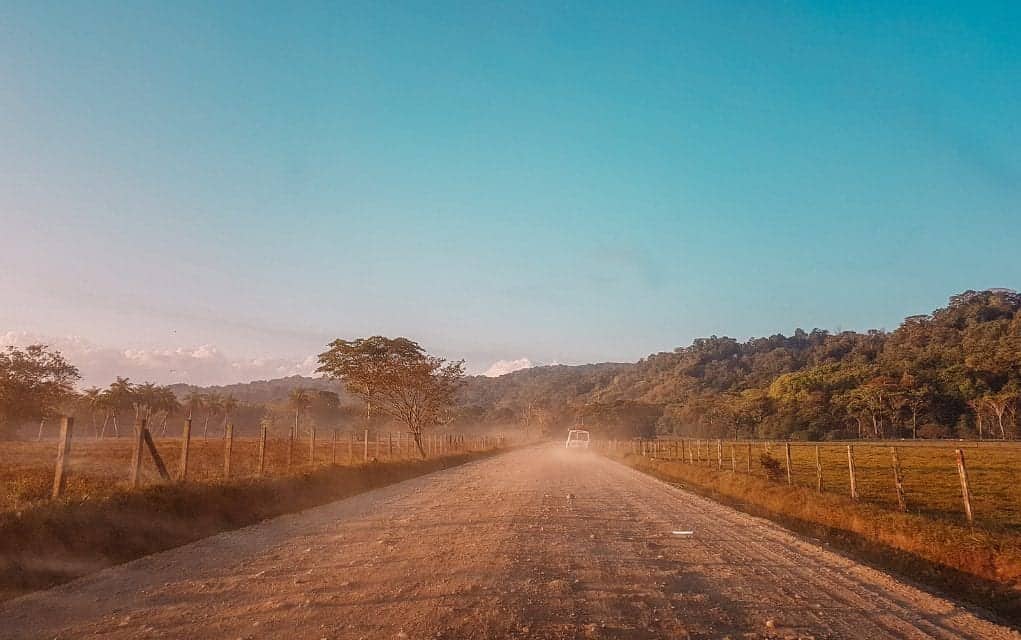
We think that, yes, you should rent a car for your trip to Costa Rica. It is typically the best way to get around if you will be visiting multiple destinations.
Driving in Costa Rica can be a bit overwhelming, but if you are a somewhat experienced driver you likely won’t have any troubles.
For more info, we have a guide to all types of transportation in the country. This will help you decide the best transportation option for you.
We also have a great 10% discount with our favorite Costa Rica car rental company, Adobe. You can read here to find out which type of car in Costa Rica is best for you based on where you are going, info about car insurance, and more.

Adobe Rent-a-Car
- 10% discount for Costa Rica Vibes readers
- Free second driver
- 0% deductible on Liability Protection Insurance
- Excellent customer service
- New fleet of well-maintained vehicles
Do I Need a 4×4 Vehicle in Costa Rica?
Typically you will not need a 4×4 vehicle in Costa Rica. However, we suggest at least renting an SUV with decent road clearance to make your driving experience more comfortable.
The exception to this is remote areas with unpaved roads. In thesea areas, a 4×4 is a good idea.
Before booking a hotel or vacation rental, ask what the road conditions are. It is not unusual for hotels to be on steep unpaved side roads that you will need a 4×4 to access.
Road Signs in Costa Rica
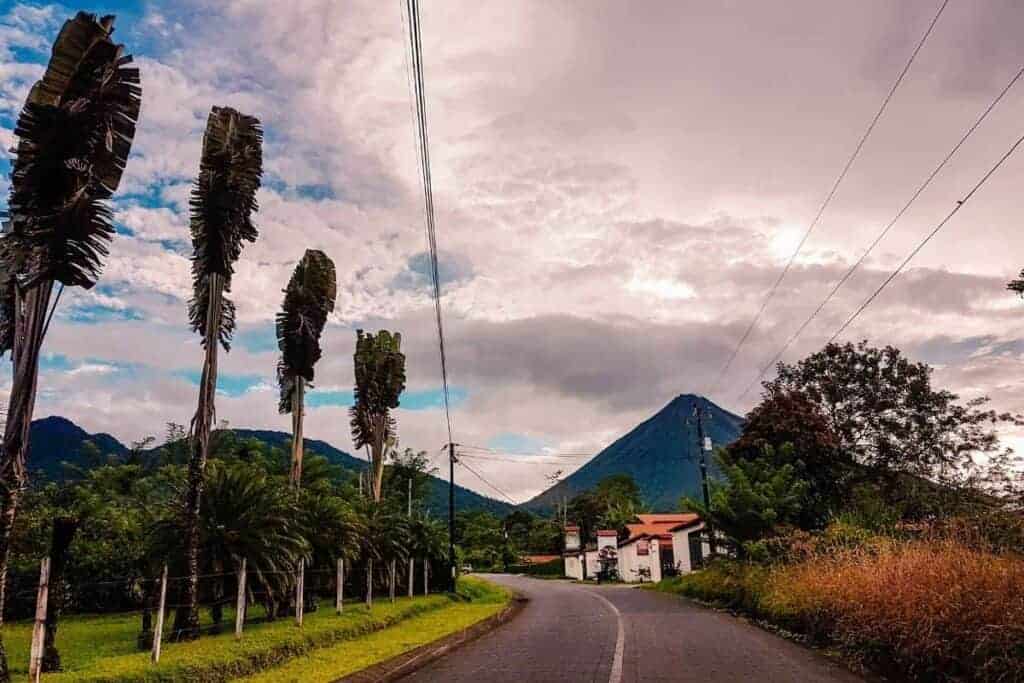
Here is an overview of the Spanish road signs and what they mean.
Velocidad Maxima: Maximum driving speed. Keep in mind that this speed is in kilometers not miles.
Alto: Stop. The sign is a red octagon like a normal stop sign
Ceda el Paso: Yield. The sign is a white triangle with a red border like a normal yield sign
Desvio: Detour. If you come across a detour sign it can sometimes be a bit confusing. Definitely refer to your GPS unit and try to keep an eye on what all the cars in front of you are doing.
Puente Solo Carrill: One lane bridge. Keep in mind that there are a lot of one-lane bridges in Costa Rica and often they only have a yield sign. Check to see if any cars are coming from the other direction before proceeding.
Zona de Escuela – School Zone This sign warns drivers that they are entering a school zone with reduced speed limits.
Despacio: Slow. You will see this sign a lot in smaller towns and around curves.
Carreta en Mal Estado: Road in bad condition. If you come across this you will have to assess how bad the road is before proceeding. There are roads that can be a problem without a 4 wheel drive vehicle.
No hay paso: Do not enter
Una via: One way
Salida – Exit This sign is used on highways to indicate exit ramps.
Entrada – Entrance This sign is used on highways to indicate entrance ramps.
Curvas adelante: Dangerous curves ahead. Definitely take heed to this because there are some really crazy curvy roads in Costa Rica.
Costa Rica Driving Laws
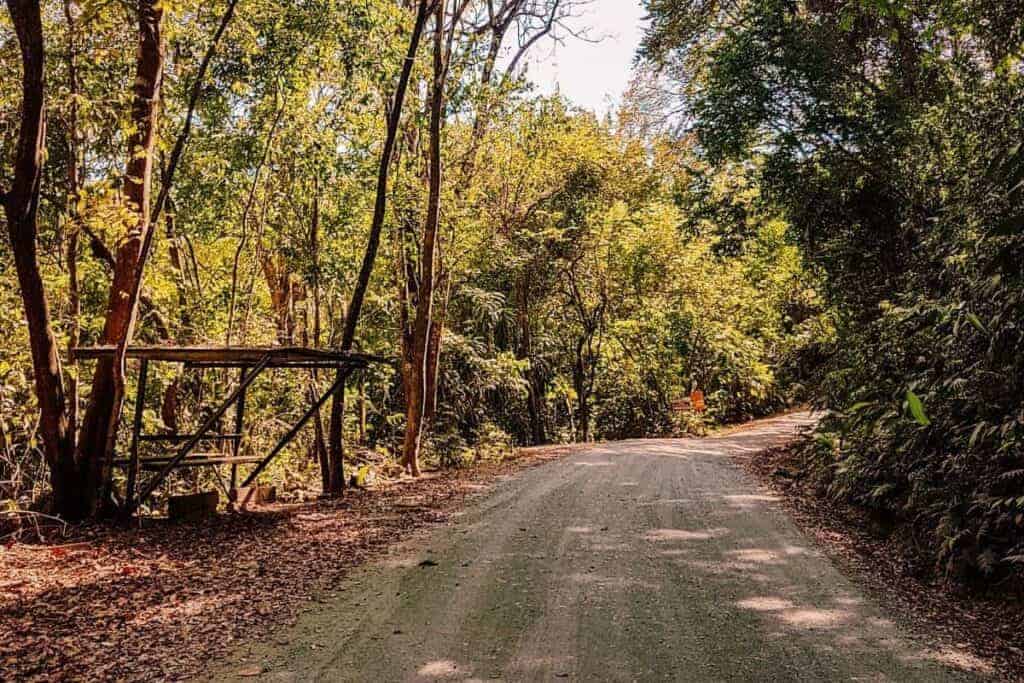
Speeding, driving under the influence, and not wearing a seatbelt are the common infractions that seem to occur in Costa Rica.
The fines for these can be high!
For example, driving while on a cell phone will land you almost a $200 fine. Passing on a curve can land you a $550 fine.
Most of the driving rules are the same as the United States.
Just be aware that people drive a bit crazy here. It is normal for people to switch lanes without putting on their blinker, run a red light if nobody is around etc.
Use common sense and stick to the speed limits as much as possible and you likely won’t have any issues.
If you use Waze to get around, police who are checking car speeds are usually marked on the app.
Also, usually, if a car is approaching you they will flash their lights at you to let you know that there is a police officer ahead.
Driving During Rainy Season vs. Dry Season
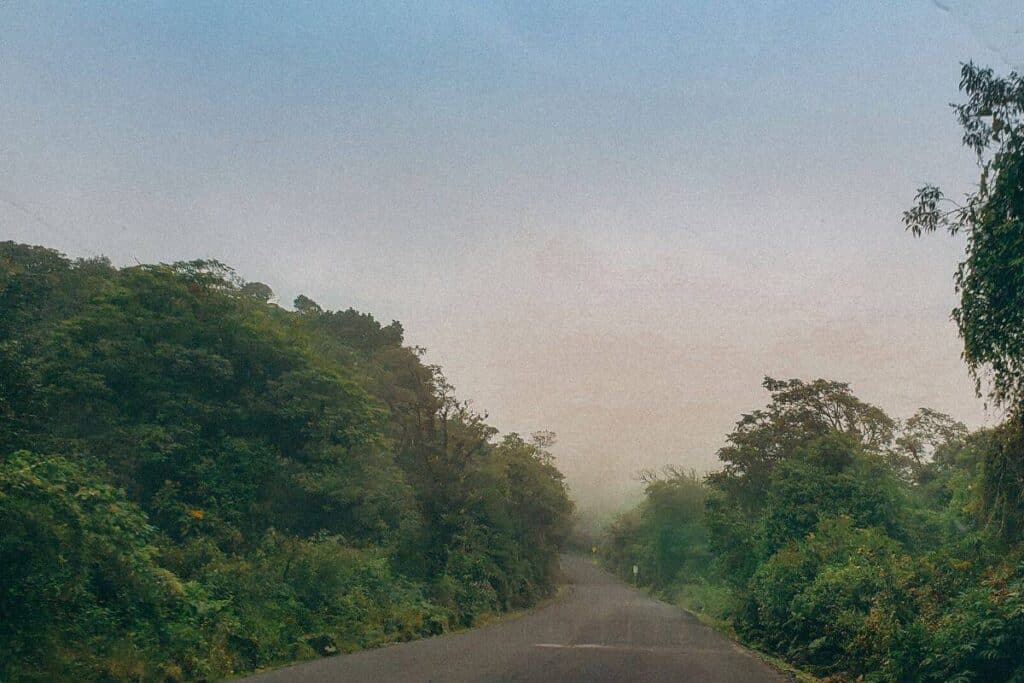
Road conditions can be completely different during the rainy season versus the dry season. During the dry season, most roads will be very easy to drive on.
During rainy season it is more likely that you may have to deal with river crossings, flooded roads, trees down etc. This is especially a problem on dirt roads.
Here are a few places you need to take extra caution during rainy season:
– Nicoya Peninsula (Montezuma and Santa Teresa area): Many of the roads in this area are not paved. Keep an eye out. After heavy rain, there can be some road damage.
– Samara/ Nosara area: There are multiple river crossings in this area. During dry season it is no problem to drive through them, but if there has been frequent heavy rains your vehicle might not be able to make it through. Also, keep in mind that you are not technically allowed to drive through rivers with your rental car.
– The road from San Jose to the Caribbean coast: This road goes through a national park which is almost always cloudy and rainy. Just note that the road is also very curvy and during the rainy season there are frequent accidents. Go slow and find a safe place to pull over if the rain is really bad.
– Dominical area: This was a total freak thing, but keep an eye out when crossing bridges during heavy rains anywhere in the country. A few years ago a couple from Boston was on their honeymoon and drove across a bridge over a river in Dominical during a heavy rain. There was a flash flood and the water flooded the bridge. The car got swept out into the ocean and the man, unfortunately, did not survive.
– Osa Peninsula: Near Puerto Jimenez and Drake Bay there are several river crossing that can get very flooded during rainy season.
Driving at Night in Costa Rica
We do not suggest driving at night in Costa Rica if possible. Some of the roads are a bit crazy and it can be difficult to navigate them, especially at night.
If you really need to drive at night, make sure your headlights are on and you have a good idea of the directions ahead of time.
In many parts of Costa Rica, you may encounter wildlife crossing the road at night. Be particularly cautious, especially around dawn and dusk when animals are more active.
Costa Rica Highways
There are several highways throughout the country that connect the main towns and cities. Most highways are decently maintained, but sometimes you can come across one that has seen better days.
- If driving from San Jose to the Pacific Coast there are tolls. You can pay in colones or US dollars. If you don’t have colones I suggest paying with a $10 bill. The change will be in colones. This will be enough for the rest of the tolls.
- Keep in mind that motorcyclists seem to think that they can pass cars from all sides. Just note that they may come out of nowhere.
- On some highways the lanes can go from two lanes to one lane very abruptly. Definitely exercise caution when passing other vehicles.
- If you are driving up in Liberia on Route 1, note that the speed limit changes constantly. They put this highway through several towns so you will also randomly come across pedestrian crosswalks on the highway. Yes, it’s insane.
Rural Driving
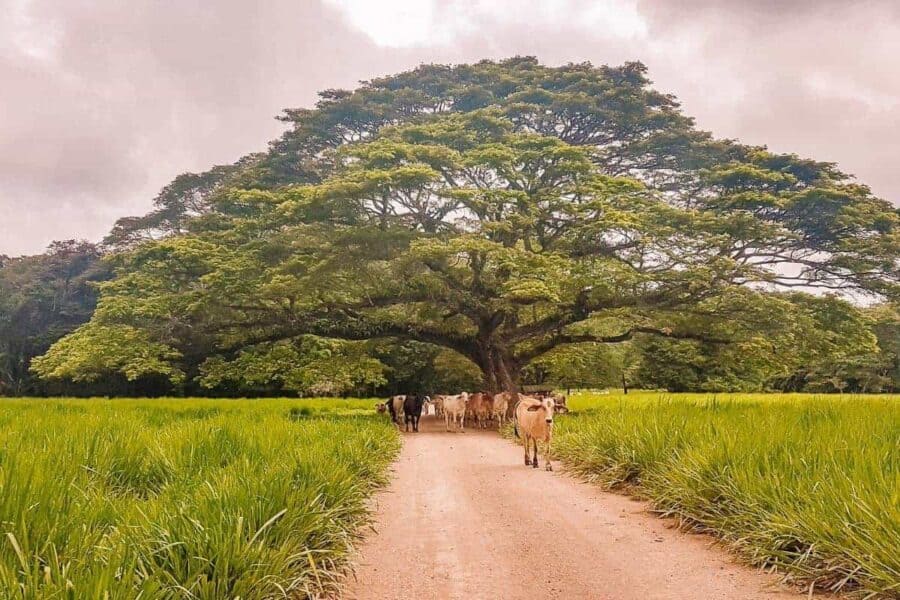
In some ways, rural driving is easier than highway driving, but you will also have different things to look out for.
- Keep an eye out for animals. You never know what you will come across in Costa Rica.
- Look out for speedbumps. Sometimes they are really hard to spot. You will usually find them when driving through small towns and villages.
- Be aware that there are a lot of single lane bridges. Use caution when crossing them.
- Download your driving route ahead of time. It is rare to lose cell phone service in Costa Rica, but it occasionally happens.
Getting Gas in Costa Rica
There are gas stations in most towns throughout the country. However, we have sometimes experienced gas stations in someone’s backyard while in very small towns.
If possible, definitely fill up in a populated town at a normal gas station.
Gas prices are nationally regulated so you will pay the same amount no matter which gas station you go to.
Also, all gas stations in Costa Rica are full-service. Just stay in your car and someone will come over to you to fill your tank.
You do not need to give a tip, but if they wash your windshield (which they sometimes do) we will through in an extra 500 colones (a dollar) as a thank you.
What to Do if You Get Pulled Over
We have heard of corruption from police officers, but we have never experienced it. We have never been pulled over besides during a checkpoint (which we talk about later in this article).
The only other experience we have had with the police was at the beach. I had moved our car keys from my towel to my backpack but a police officer happened to be walking behind us thought I was hiding drugs or something.
They searched my bag but when they realized it was just my keys they were very nice and warned us to keep all valuables hidden while on the beach.
Anyway, if you do get pulled over, remain calm and pull off to the side of the road.
The officer will ask for your license, registration, rental car agreement, and possibly your passport. The officer may or may not speak English. In smaller towns, it is less likely that they will speak English.
In the past, it seems it was common to bribe officers, but I think that practice has been reduced in recent years. I would not risk trying it.
Instead, just accept your ticket and go on your way.
It is possible to pay a ticket at any bank in the country. You will need to wait a few days because it can take a few days to show up in their system.
Just note, there are multiple police office branches in the country. Only the Policia de Transito is allowed to pull you over for a driving infraction.
What to Do if You Have an Accident
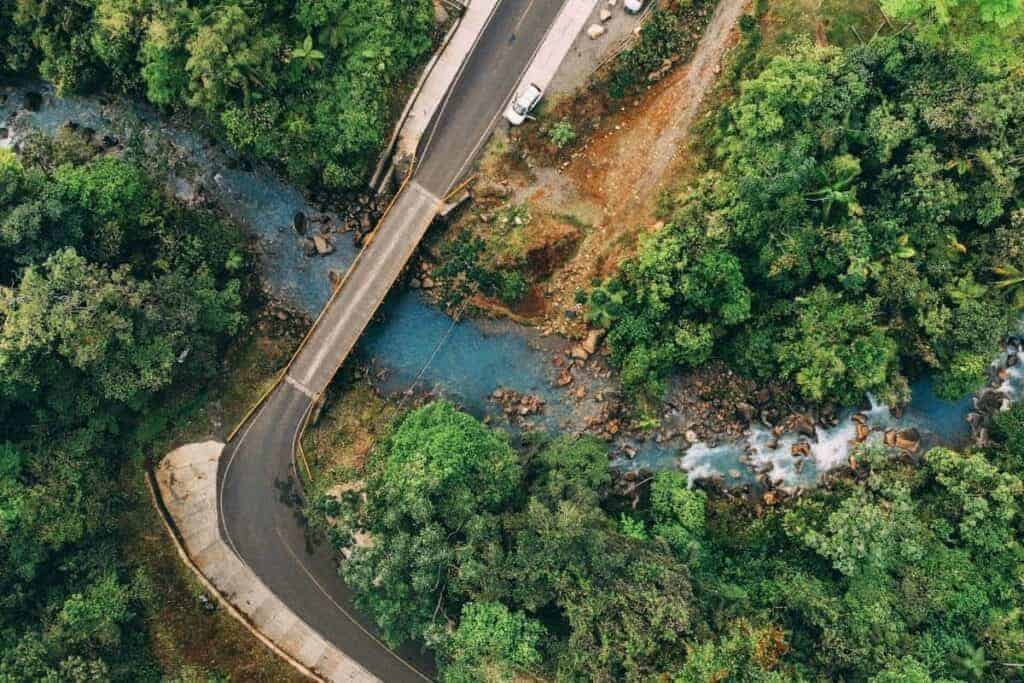
If you get in a car accident your first move should be to call your rental car company. If there is an injury obviously call 9-1-1 first and then call the company.
If you rent with Adobe, they are super great and will send someone out to assist you and bring you another car when applicable.
🚗 Check Availability and Get a Car Rental Quote from Adobe 🚗
When you pick up your rental car an employee will give you a thorough brochure with all the information and emergency numbers.
Adobe actually has a great article on their website about what to do during an accident here.
Staying Safe While Driving
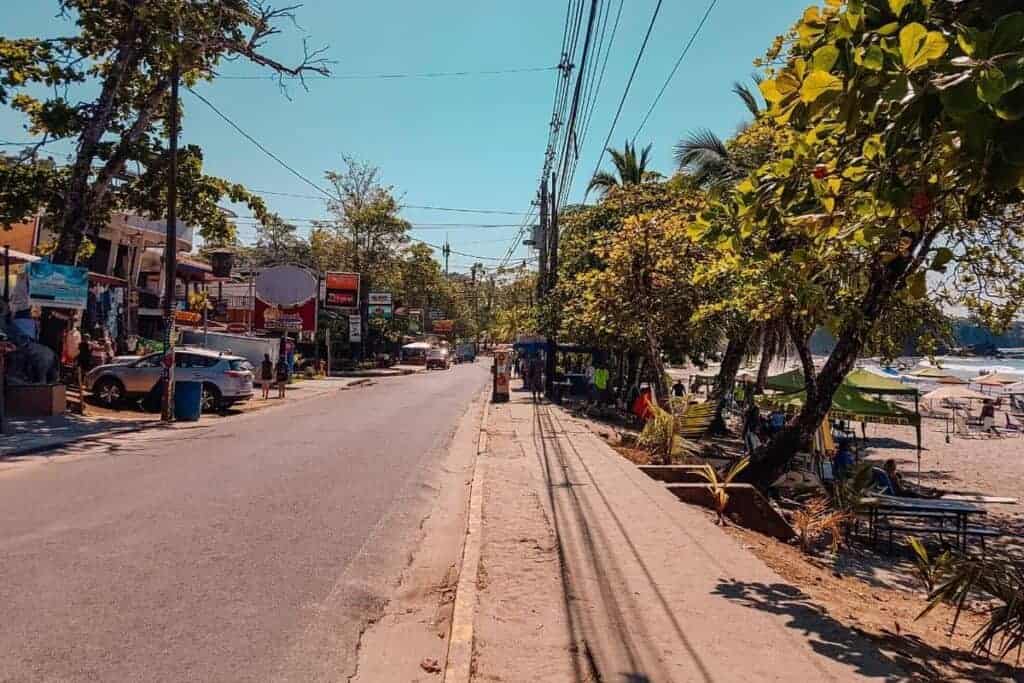
Safety While Driving
- Obey all signs when possible.
- Use the free app Waze for driving directions. As I have mentioned, almost everyone in the country uses Waze for directions and they are great about marking things in the road that you need to watch out for. For example, Waze will indicate to you when there is a hazard in the road, a police officer etc.
- Even when driving, keep doors locked and keep windows up when at traffic lights or in heavy traffic. We have never experienced this, but we have heard of people walking up to cars and reaching in and grabbing purses while at traffic lights.
- Be aware that is not unusual for roads to go from two lanes to one lane very quickly. Keep an eye out for any merge signs. This especially applies to the road from San Jose to the coast.
- There is a lot of wildlife in Costa Rica and sometimes these animals decide to cross the road. Just keep an eye out.
- Watch out for vehicles carrying items that could fall off. For example, we saw this truck on the highway. Apparently, cardboard is an acceptable wall.
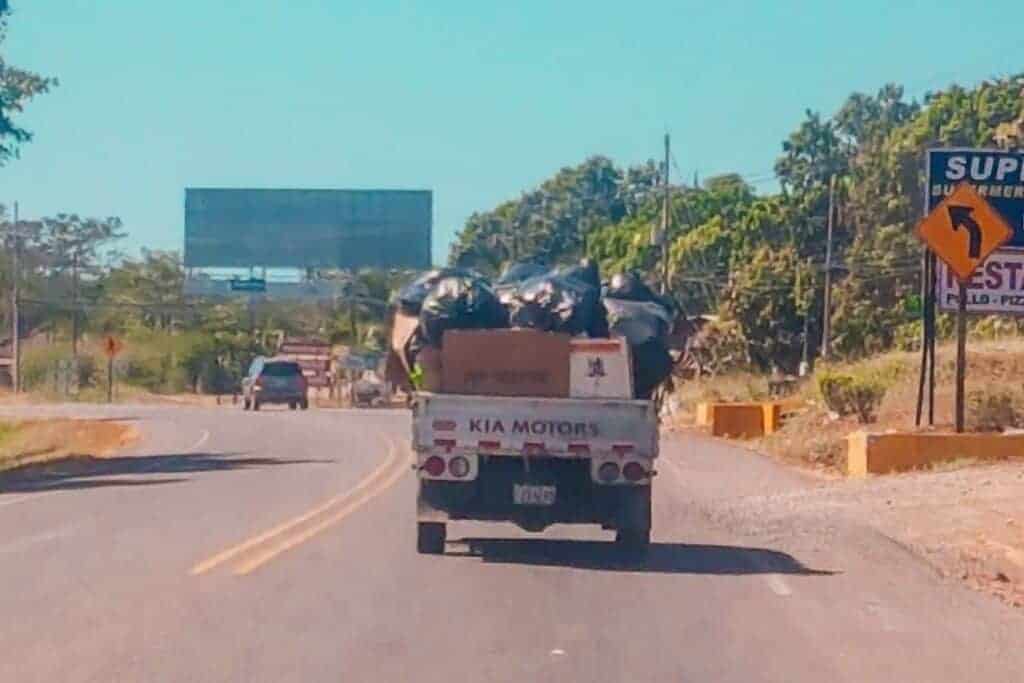
Safety While Parked
Don’t ever leave anything of value in your car.
It hasn’t happened to us, but petty theft is the most common crime here and car robberies are known to happen especially in remote areas where nobody else is around.
Do You Have Travel Insurance?
Don’t let unexpected medical expenses or trip interruptions overshadow your dream Costa Rican vacation.
Secure your worry-free Costa Rican adventure with Heymondo travel insurance
The Best Way to Get Directions
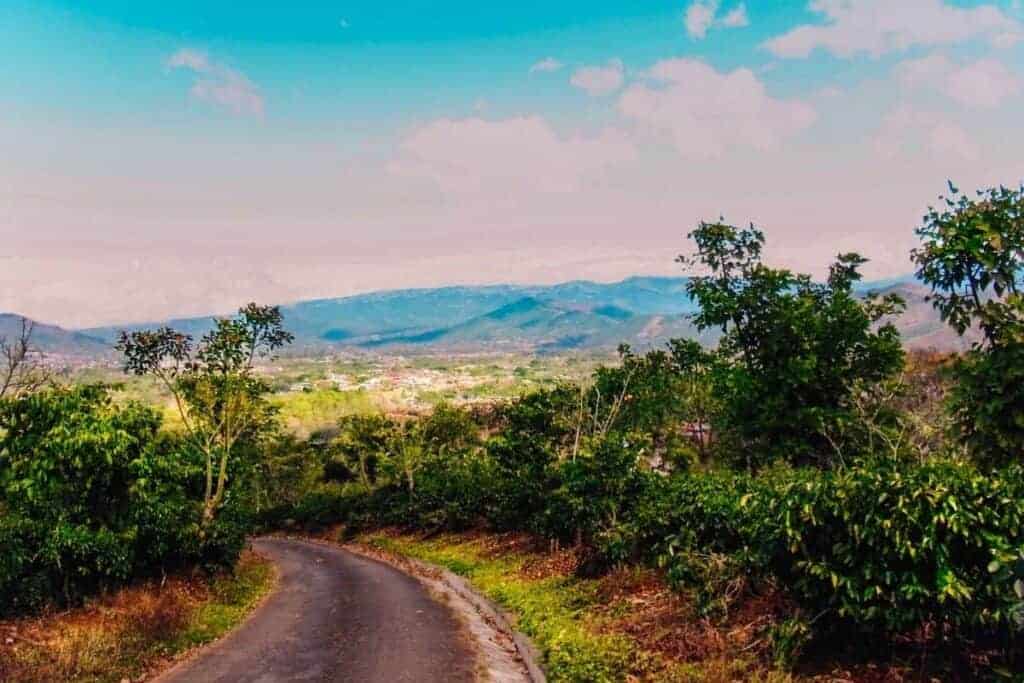
We suggest using the free app Waze on your phone for directions in Costa Rica. It is great!
We have a guide to using your cell phone in Costa Rica if you need more info on how to get 5G connection while in the country.
It is also possible to rent a GPS through your rental car company. If you rent with Adobe, you can get a GPS unit with our discount.
For more info, we wrote a complete post with a breakdown of how to get directions in Costa Rica here.
Other Costa Rica Driving Tips
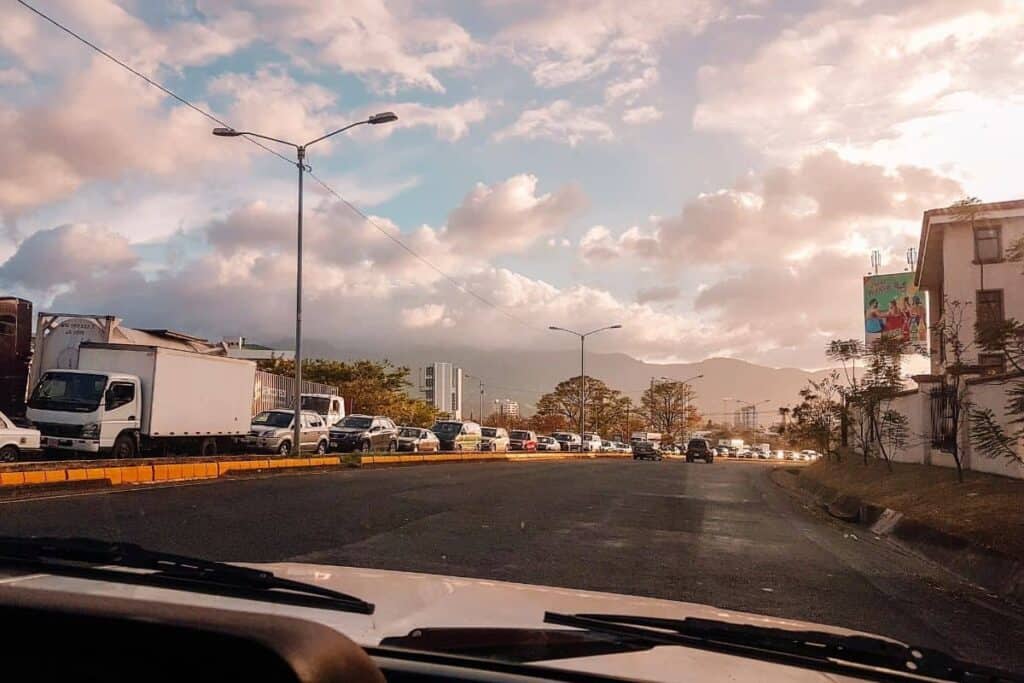
- If you need a good radio station we suggest 104.7. It’s usually our favorite. For music, you can also use the Spotify app on your phone. Just don’t forget to bring your auxiliary cable to plug in so you can listen through the car speakers.
- All of our Destination Guides include driving information. I suggest reading the guide for each place you are planning to visit for some further driving guidance.
- Sometimes you might run into a checkpoint. This is typically an officer or two who pulls over every car on a certain stretch of road to check for drugs. Typically, they won’t stop tourists, but we did get stopped once. The officer was very nice and spoke English. After doing a quick check of our car and our passports we were free to go.
- There is a constant checkpoint on the Caribbean coast just above Cahuita. If you are driving down to Cahuita or Puerto Viejo be prepared to stop and hand over your license and passport.
- In downtown San Jose there are restrictions on which license plates can drive on certain days of the week. This restriction does not apply to rental cars. With a rental car you can drive on any day you would like.
- Don’t forget that speeds on street signs are in kilometers per hour not miles per hour.
- Always drive a bit on the defensive here. People aren’t usually nice about letting you merge or switch lanes. You’ve got to show your power (an SUV definitely helps with this).
- Expect motorcycles to constantly be zipping by you while ignoring all rules of the road.
- Always be prepared for road trips to take longer than expected. It is not uncommon to get stuck behind a big trunk on a road and have trouble passing. I always add an hour on to whatever Google Maps tells me for driving time. I am also always prepared for drives with plenty of water and snacks, just in case.
- We suggest visiting one jungle and one beach town for a one-week long trip, This will give you the perfect preview of the country without too much driving.
🚗 Check Availability and Get a Car Rental Quote from Adobe 🚗
Conclusion: Driving in Costa Rica
I know, this was a lot of information on driving in Costa Rica. It may seem overwhelming, but you should be fine driving while visiting the country.
You now know all about the driving signs, getting gas, how to get directions, and more!
If you have any questions about driving in Costa Rica please leave them in the comment section below. We are always happy to help you out.
Also, if you have had an experience driving in Costa Rica we would love to hear about it. It can help future travelers.
You Might Also Like:
Costa Rica Travel Details: What You Need to Know
🚗 Should I rent a car in Costa Rica?
Having a rental car will give you the most flexibility when traveling in Costa Rica. This will also allow you to take fun day trips on your own.
- Save 10% Plus Other Perks with Our Adobe Rental Car Discount
- You might also consider; shared shuttle services or private transfer services
🏄🏽 How can I book things to do?
We find that Viator tends to have the most comprehensive selection of activities with secure booking and good cancellation policies.
🍍 I’m overwhelmed with planning. Can you help?
Of course! I suggest joining our Facebook group for specific questions and head to our Start Here Page to get started planning.
✈️ What is the best way to book a flight?
Usually, we have the best luck finding great prices with Skyscanner. Check for flights to both San Jose Airport (SJO) and Liberia Airport (LIR).
🛏️ What is the best way to book my Costa Rica hotels?
We highly suggest Booking.com for hotel bookings and typically use VRBO for Costa Rica vacation rentals.
🗣️What is the main language in Costa Rica?
The main language in Costa Rica is Spanish. Most people working in tourism speak at least some English.
💰 What is the currency in Costa Rica?
The currency used in Costa Rica is the Costa Rican colón (CRC). However, the US dollar is widely accepted in most tourist areas
📞 What is the best way to stay connected?
An eSIM from Airalo is the easiest way to get 4G data while traveling in Costa Rica.
🌴 Is Costa Rica safe?
Generally, Costa Rica is considered safe for tourists. However, like any travel destination, it’s best to use caution and be aware of your surroundings.
🛂 Do you need a passport to go to Costa Rica?
Yes, Costa Rica is its own country. You will need a passport to visit.

Hi! We’re Thomas (the German) and Sarah (the US-er)
We met in Virginia, moved to Germany, and since 2016 we have lived in sunny Costa Rica.
It was a spontaneous decision to move here, but it was the best decision!
Now we spend our days roaming the country to bring you the very best in Costa Rica travel here on Costa Rica Vibes.
Sarah is the writer. Thomas is the one keeping it all together.
Want the whole crazy story?

Sarah McArthur
Sarah McArthur is the co-founder and main writer of Costa Rica Vibes.
She is originally from the United States but has lived in sunny San Jose, Costa Rica since 2016.
She has traveled all over the country and now considers herself a self-proclaimed Costa Rica travel expert.
Want the whole crazy story?

